How to enclose a windy area of your yard – 9 expert-approved design solutions
From smart planting choices to high backed seating and windproof panels, we recommend the best way to create shelter in your yard

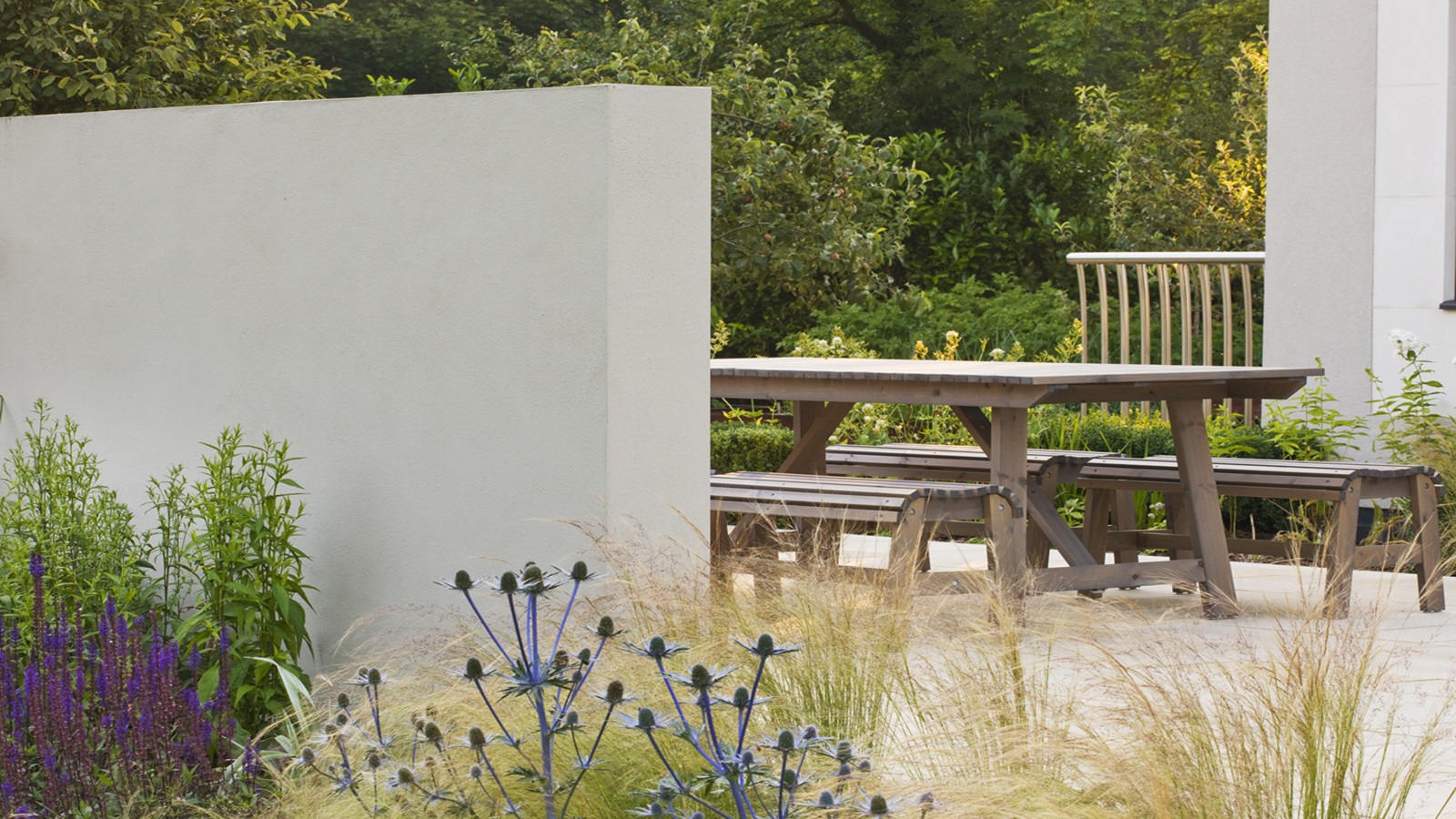
- 1. Add a woven wind barrier
- 2. Plant up a wind screen
- 3. Surround seating with a wind break
- 4. Dig down
- 5. Install a pergola
- 6. Cultivate a hedgerow aka a living windbreak
- 7. Divert the breeze with strategic statement walls
- 8. Disperse the wind with wire filled baskets
- 9. Add shelter with living walls
Knowing how to enclose a windy area in your backyard can make a huge difference to how you enjoy and use your outside space. From a regular chilly breeze that hinders the growth of tender plants to blustery gusts that play havoc with alfresco family meals, there are many reasons you may need to hunt for a solution to this common problem.
Fortunately, landscape designers and experienced gardeners have been solving this issue for years and there are some pretty nifty solutions out there, all of which can be tailored to your needs. Carefully assessing your plot and working out which are the most exposed areas, plus noting the direction of the keenest wind, is key to designing any effective windbreak. If simple gestures such relocating a veggie patch or a dining area to a more sheltered position are not an option, then it's time to consider how best to enclose the space.
There are some amazing plants, shrubs and trees available that can provide protection, help filter the wind and provide a leafy backdrop too. Learning what is wind rock along with how to best plant a hedge will ensure these new additions perform well, while smart landscaping options and clever fencing designs can add structure and year-round interest.
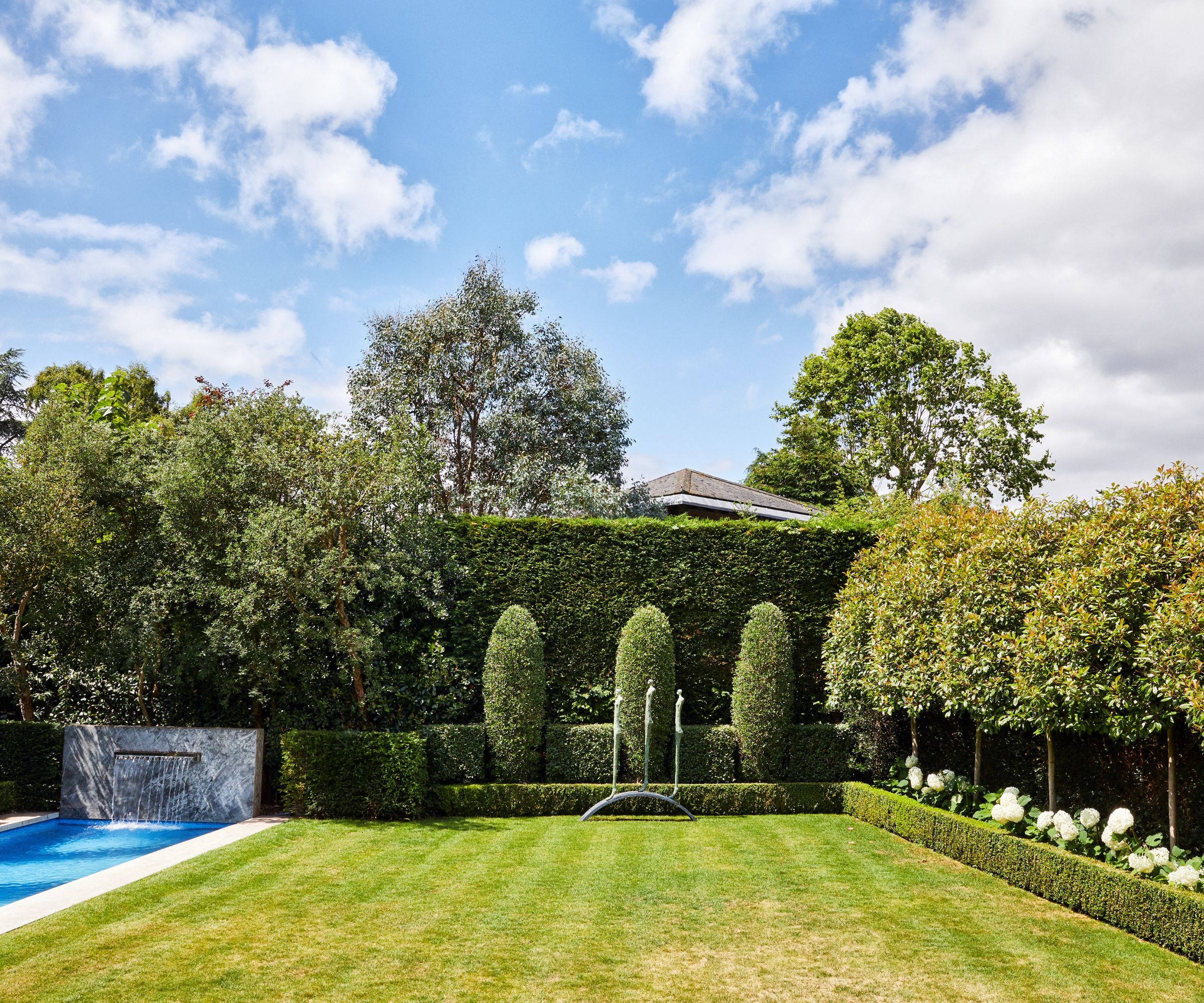
9 ways to wind-proof your garden
Protecting your garden from buffeting winds can completely change how you use and enjoy the space. From planting a hedge, strategically placing a wind break to re-sculpting the land and seating areas, there are plenty of solutions to try.
1. Add a woven wind barrier

It may sound obvious, but your choice of fencing or boundaries has a huge impact on how well your garden can handle strong winds. 'Instead of solid barriers, try lattice panels or slatted fences,' suggests Master Gardener Tabar Gifford. 'These let air pass through, reducing wind pressure while still giving you privacy and a stylish look.'
There are plenty of different styles and materials of wind-proof fencing to choose from, including robust hazel and willow hurdles, timber framed reed and willow panels, slated fencing, such as these panels from Amazon, and English cottage style diamond trellis.
Each have a different texture and aesthetic, so consider which will show off your planting choices and garden features to best advantage. If your plot is regularly battered by strong winds, opt for sturdy materials and a design with larger openings for the least wind resistance.
Design expertise in your inbox – from inspiring decorating ideas and beautiful celebrity homes to practical gardening advice and shopping round-ups.
2. Plant up a wind screen
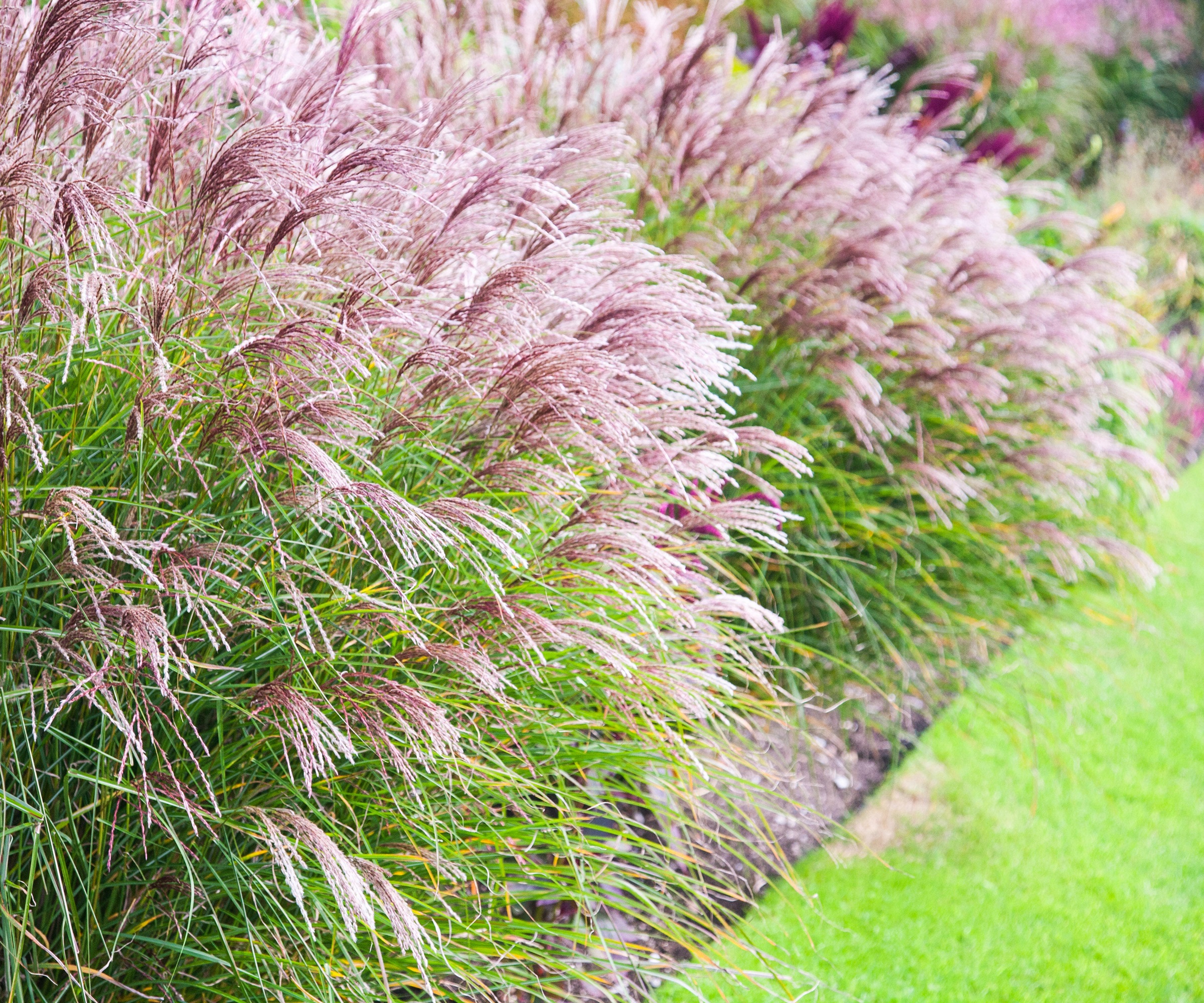
Establishing a row of tough, wind resistant plants is an effective and beautiful way to disperse strong winds from sweeping across your garden.
'Wind can be a large determining factor when choosing the best plants for your yard. However, there are some plants that can not only withstand high and prolonged gusts, but can enhance your garden aesthetic, provide protection for other plants, and create privacy at the same time. While planting location, soil type, and water accessibility are important factors for the success of any plant, there are many options in the market,' explains plant expert Lauren Carvalho.
Ornamental grasses can create graceful windbreaks when planted en masse. 'One of my favorites is Sporobolus wrightii ‘Windbreaker’,' explains Lauren. 'True to its namesake, Windbreaker’ was originally selected to provide wind protection in between agricultural fields. This form is also more ornamental than the straight species.'
Trees and shrubs can be effective windbreaks too. These can be planted in hedgerows or groups that interlock together to provide added wind protection. 'Some favorites are Apache Plume (Fallugia paradoxa), New Mexico Privet (Forestiera neomexicana), and Three Leaf Sumac (Rhus trilobata). All of these provide additional aesthetic value, winter interest and habitat for wildlife,' Lauren adds.
Landscape designer Elliot Rose of Wildwood Landscapes says, 'When creating a wind screen with plants, it’s important to plant more closely together than you would normally and select specimens that are fast growing and but to manage and shape. We often use Pittosporums ('Silver Sheen' or 'Marjorie Channon', Podocarpus, Dodanaea, clumping bamboos, or laurels.'
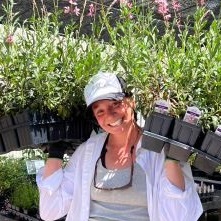
Lauren is the Horticultural Manager for High Country Gardens. Growing up the daughter of a landscape designer, she was often a tag-along to job sites and wholesale nurseries. Although it began as childhood drudgery, working with plants has become the focus of Lauren’s adulthood and career. Beginning as an organic produce farmer in the Southwest, she developed a fascination with reducing the use of pesticides through using beneficial insects. This led to a life-altering opportunity learning to propagate native and pollinator-friendly, habitat-providing plants under the tutelage of Horticulturalist David Salman.

Growing up in Marin County, Elliot worked alongside his father who owned a construction business that operated throughout the Bay Area. Following his college studies in landscape design and horticulture, he went on to open a commercial aquaponics farm in Half Moon Bay, which eventually led to his career in landscaping. At a local high-end design and build firm, Elliot served as a construction foreman and assistant designer until he opened Wildwood Landscapes. Elliot continues to bring his passion for design and strong technical construction background to every project, leading clients from the initial site-visits to the polished installation.
3. Surround seating with a wind break

There’s nothing enjoyable about sitting in your garden being battered by persistent winds, especially if you are eating or entertaining. Beat the breeze by erecting a privacy wind break. 'If the area is really exposed it may make more sense to construct a privacy barrier, similar to a fence but only a short section near or around the area you are trying to protect,' says Elliot Rose.
'Consider how high the privacy barrier needs to be to protect the area and don’t make it larger or closer than it needs to be. I like to have at least a 3ft planting bed between any barrier and a seating or lounging area to soften this transition. Try to use existing structure as much as you can such a retaining wall or side of a building to create a built-in bench for a seating area.'
Before you build, take time to work out the exact direction of the most persistent winds and think carefully about how the seating is arranged. Privacy barriers work best surrounding the back of the seating, ensuring the seated view is uninterrupted or framed by a gap or ‘window’ in another timber panel.
4. Dig down
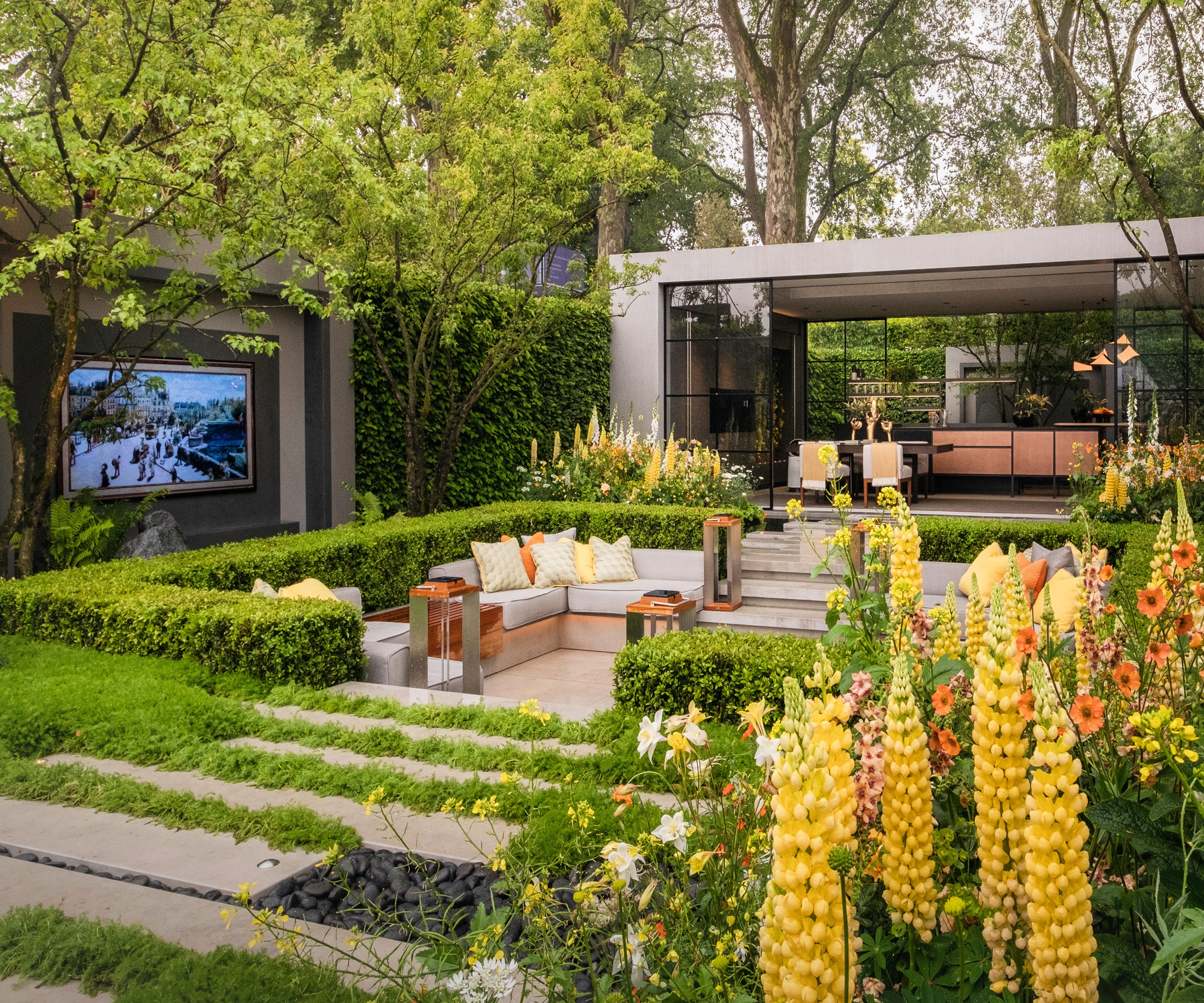
In an exposed, windblown plot deciding where to position any seating area can be tricky. One, often overlooked solution is to opt for the lowest lying spot and take advantage of the protective surrounding slopes. If your plot is on the level, then take this idea further and excavate, using any spoil to build up the margins.
Tabar Gifford explains, 'Dig into your landscape for a sunken seating area. It's a natural way to block the wind and makes for a comfy, tucked-away spot to relax. Add some built-in seating and lush plants for an extra snug vibe.'
Perfect and practical for a cosy firepit area, BBQ or a private lounging area this is a popular design solution but it’s not without its drawbacks. 'Sunken seating areas can often create other issues such as drainage and are very costly to excavate and install,' says Elliot Rose. 'I also think areas with sunken seating can often look too flat and empty and my eye prefers to be drawn out further to explore the elements of a garden.'
5. Install a pergola
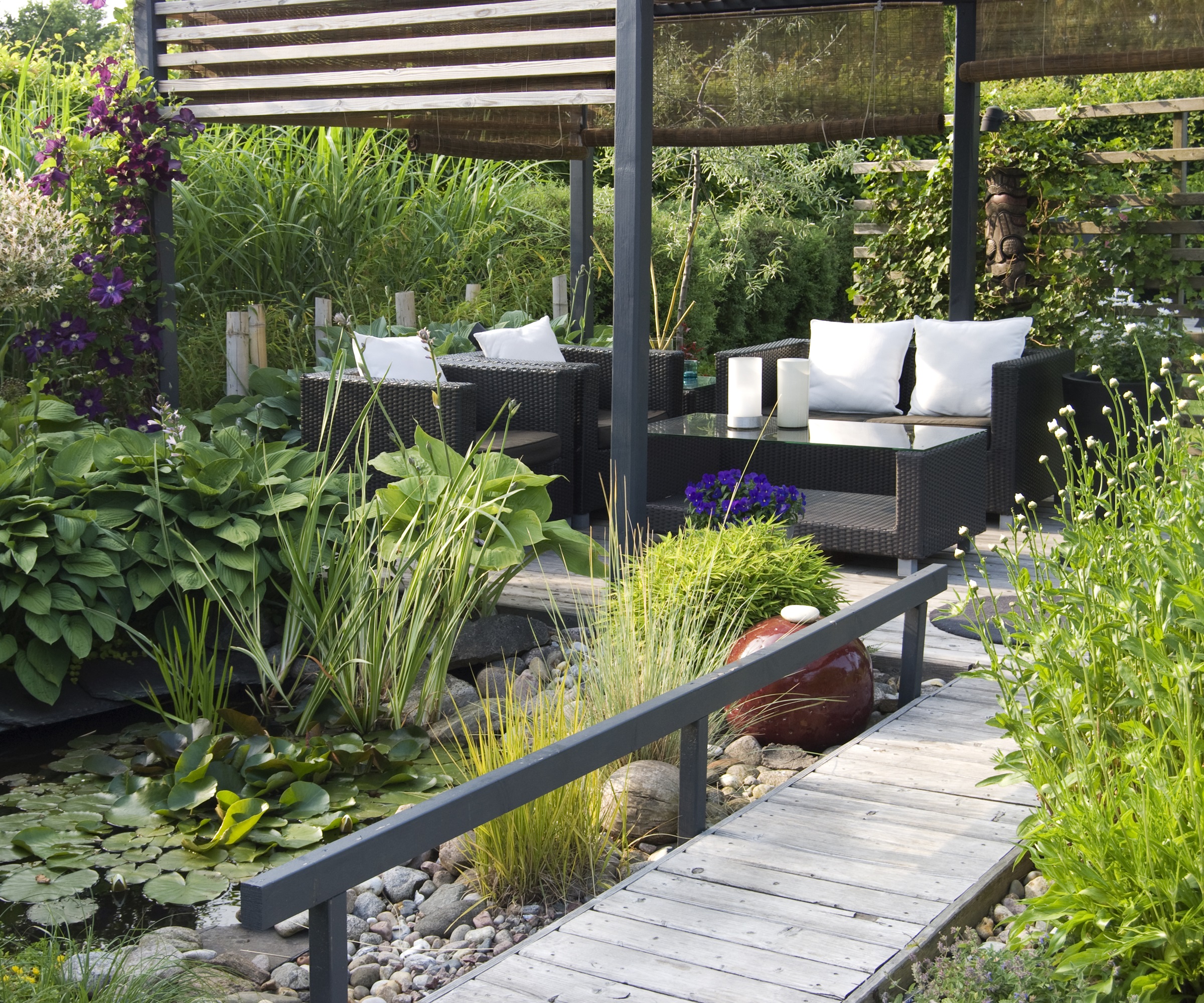
Smart and a real visual statement in any garden, contemporary pergolas are a great way to enclose and protect a windblown seating area. There are endless products to choose from in a wide range of styles, finishes and configurations and they can be tailored to suit your site and lifestyle tech requirements.
Choose from aluminium and steel frames and decide on the best combination of open and enclosed side and roof panels to keep out the elements. Sleek retractable fabric screens, slatted timber batten panels with and without apertures plus solid timber and metal cladding sections are all options each with their own characteristics and benefits. This pergola we found on Amazon is incredible value, has a retractable roof shade and would be ideal for helping to enclose a smaller spot.
Enhance the possibilities further by adding high tech features such as Bluetooth speakers, sensor automated opening and closing louvred roof and wall panels, built in pergola lighting and heating plus built in flat screens for easy entertainment.
6. Cultivate a hedgerow aka a living windbreak
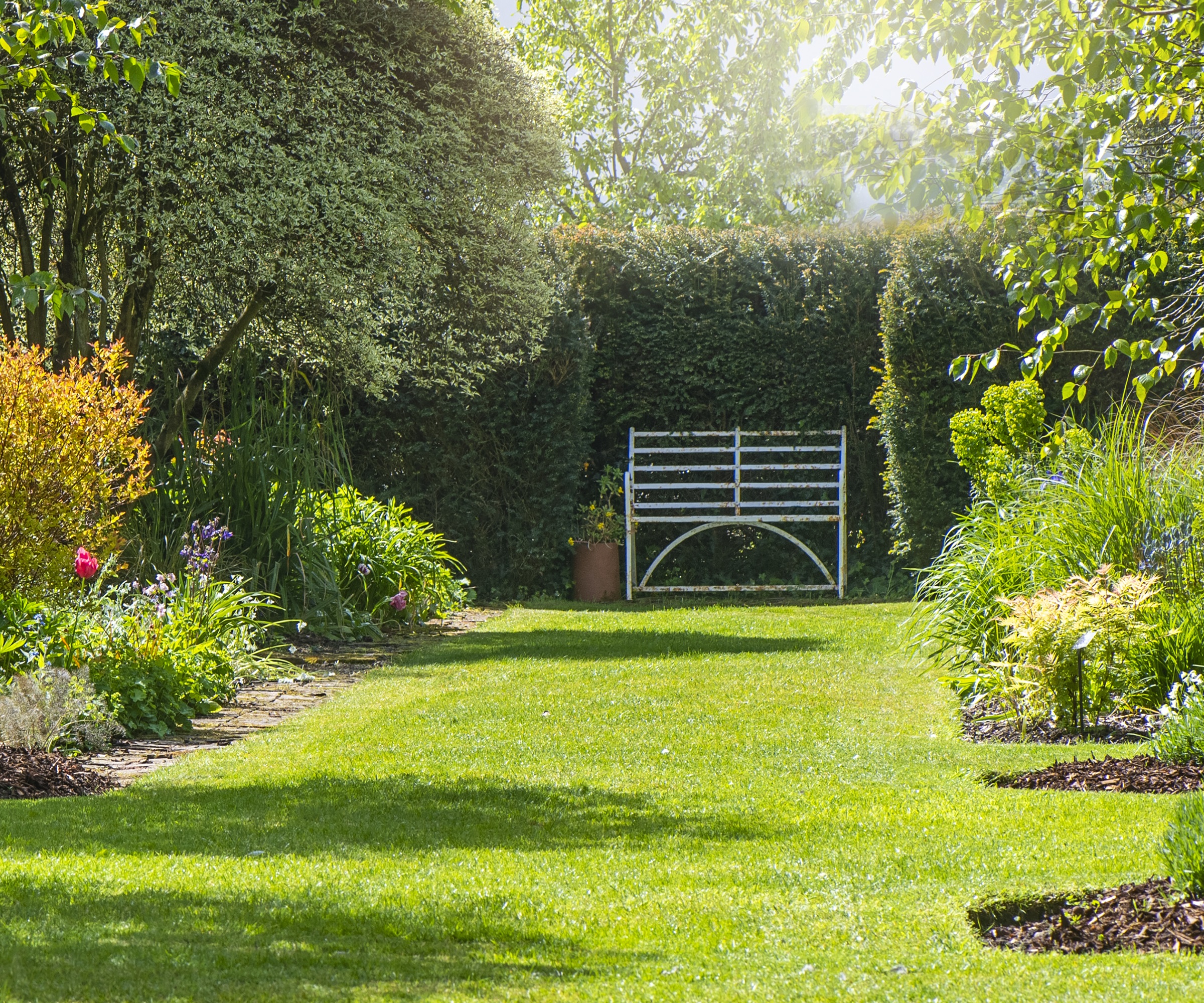
A long-term solution, planting a hedge is not only a highly effective way to protect a garden from strong winds, but it will look stunning throughout the seasons and boost your plot’s biodiversity and appeal to birds and wildlife too. With a huge choice of suitable plants to choose from, deciding on which plant varieties to go for can be tricky, but there are plenty of options for your climate and include those for flowering, fragrant hedges and spectacular leafy hedges as well as those which are intruder proof and wildlife boosting.
Many hedging plants have practical benefits too, with their roots helping to stabilize exposed soil on sloping sites. 'For gardening in windy areas, it’s essential to consider not just the plant’s ability to withstand wind but also its role in the ecosystem,' says Tabar Gifford.
'Many of our favorite plants are also drought-tolerant, support pollinators, and add visual appeal. To ensure success, focus on site preparation, including amending the soil for drainage and mulching to retain moisture which can be lost more quickly in windy conditions. Ornamental grasses like Festuca (fescue), Sporobolus (prairie dropseed), and Schizachyrium (little bluestem) are hardy, flexible, and thrive in windy conditions. Their movement adds dynamic beauty to the landscape.'
Other top contenders include Russian sage known for its tolerance of challenging environments, including wind. You can find Russian sage plants at Burpee. Goldenrod with its tall, strong stems is also well-suited for windy areas and provides late-season nectar for pollinators.
Fall and winter are the perfect time to plant a hedge as it will give the roots a chance to settle and establish before the growing season. Besides thorough site and soil preparation, wind rock is a real consideration when settling in new hedging plants. Take time to discover the correct precautions to take to protect the developing root systems, so your new hedge will thrive in its exposed setting.

Tabar Gifford works as an American Meadows Master Gardener, and has a lifelong love for gardening and nature. With a background in environmental studies and sustainable community development, she enjoys combining her horticultural expertise with a commitment to education.
7. Divert the breeze with strategic statement walls
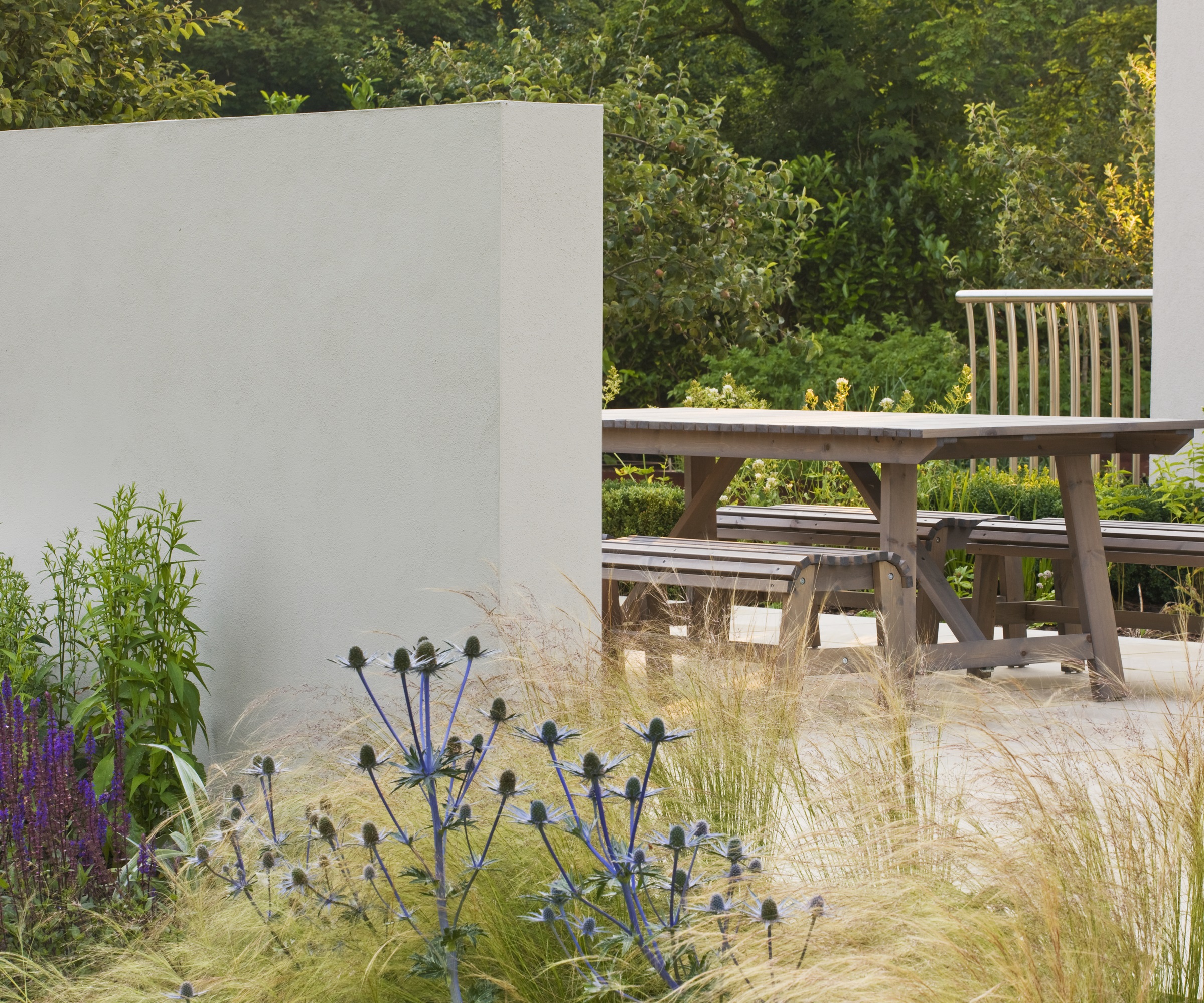
Working in the same way as a privacy wind break, short sections of wall in the right place can prove hugely effective in cutting out strong winds, protecting not just seating areas but vulnerable plants and crops too.
They also have the bonus of looking super stylish, creating striking features such as supports for falling water and cantilevered seating as well as a creative excuse to try out dramatic backdrops to accentuate planting.
The choice of construction and finishing materials are endless and vary from tactile clay and crisply rendered blockwork, to poured and polished concrete, ceramic tile and timber cladding to traditional dry stone walling.
8. Disperse the wind with wire filled baskets
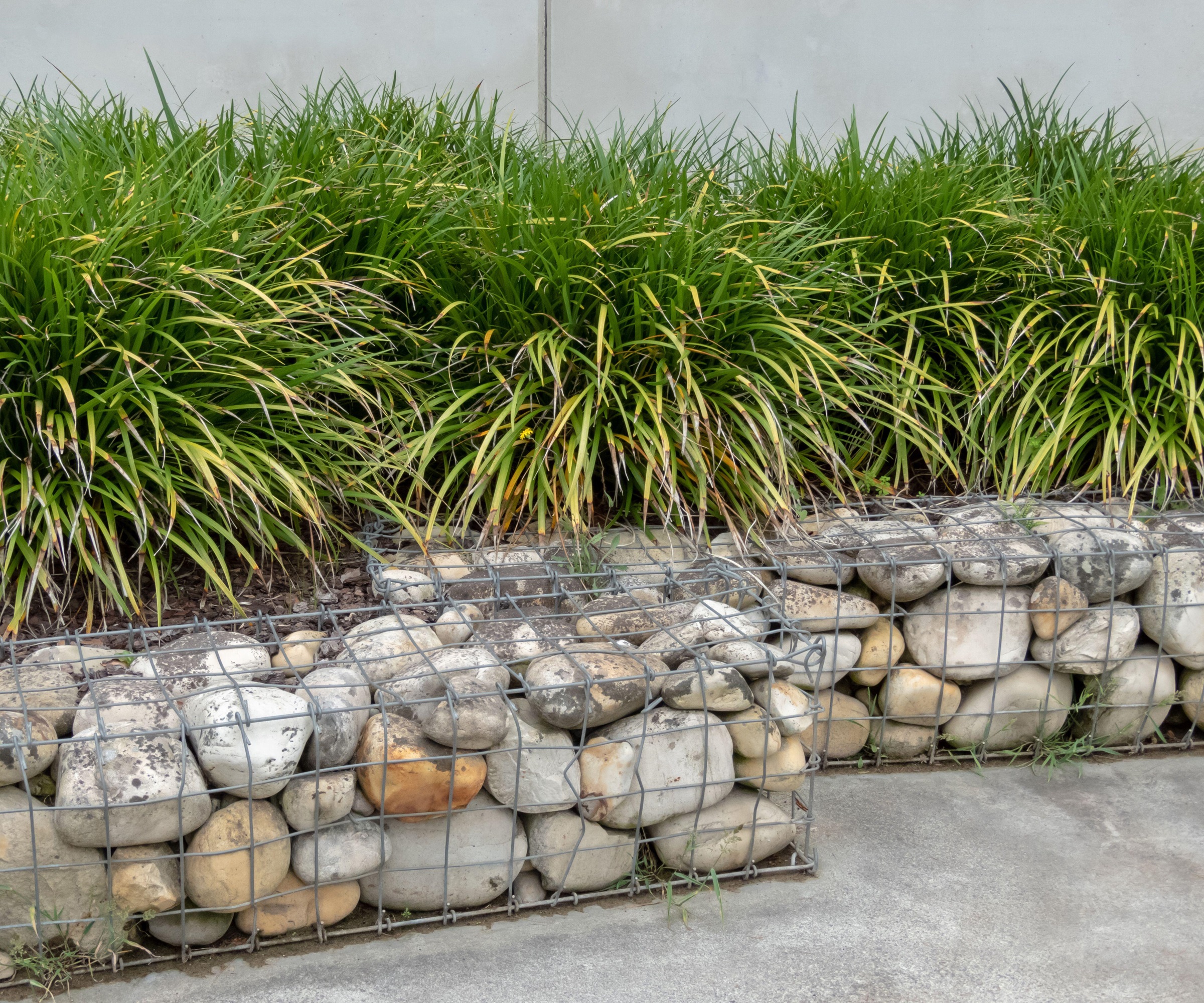
Straightforward to stack and fill, gabion baskets will lend your plot unmistakable character. Robust wire cages filled with a material of your choice – usually interlocking rock, slate or reclaimed hard core – they are available in endless heights, sizes and formats enabling you to create stunning and highly effective windbreaks. Not only will these hefty constructions disperse the wind and rain without any issue they can help with soil erosion too. You can find wire cages at Walmart, which are especially designed to work as backyard planters.
There are a few drawbacks with using gabions at home, namely cost and limitations on how high they can be stacked. Simple windbreaks and low retaining wall designs can be easily achieved at home, but for complex installations, especially where slopes are being retained or drainage is likely to be an issue, the advice of a landscape architect is essential.
9. Add shelter with living walls
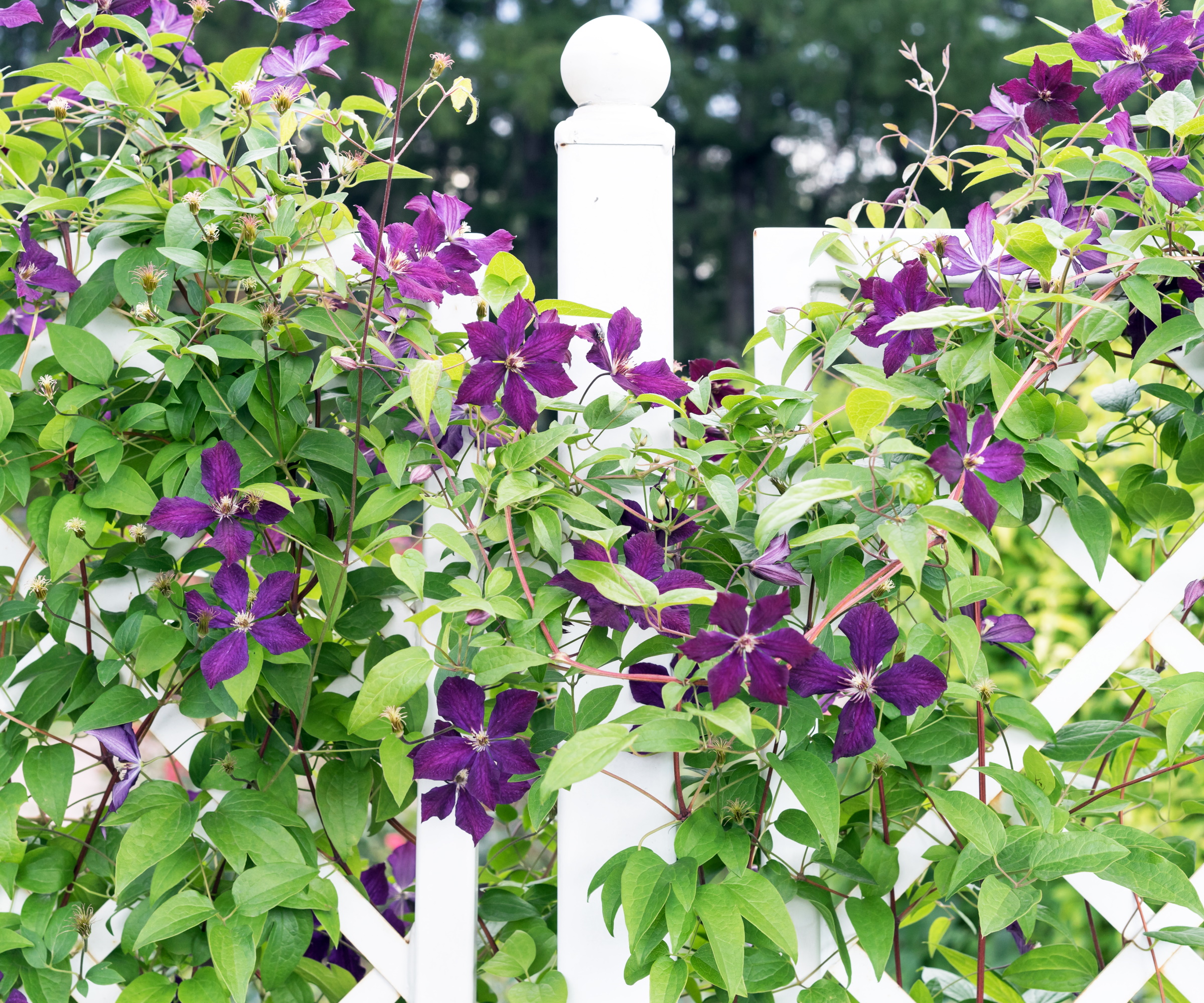
Create shelter and add beautiful, wildlife supporting climbing plants for a protective garden backdrop. Not only will they provide privacy and keep out buffeting winds but choose the right plants and they will also add seasonal interest with perfumed blooms, glossy fruits and tactile foliage.
'Trellises or living walls covered in climbing plants like ivy or clematis don’t just stop the wind - they look gorgeous and add a burst of green to your space,' says Tabar Gifford.
The key is to go for a sturdy trellis - such as Dura-Trel Lancaster Trellis from Walmart , a series of tensioned plant wires also available from Walmart or horizontal wooden battens that are treated to withstand the elements and ensure that they are securely anchored into the ground. Fast climbing plants can then be planted directly into the soil or planters placed below and the main stems tied in to the supports and any fresh shoots trained accordingly.
There are many different ways to protect your yard from strong winds and these are often a great way to kickstart a backyard transformation. Be sure to check out these easy backyard landscaping ideas along with the best shrubs for landscaping for more expert inspiration.

Journalist Jill Morgan has spent over 20 years writing and editing gardening, interior and property features. Titles she has worked on include The English Home, House Beautiful, Ideal Home, Houzz and Modern Gardens and she writes regularly for H&G as a Contributing Editor. Whilst she is a dab hand at renovation projects and DIY, she is happiest when out digging in the garden or planning a new border.